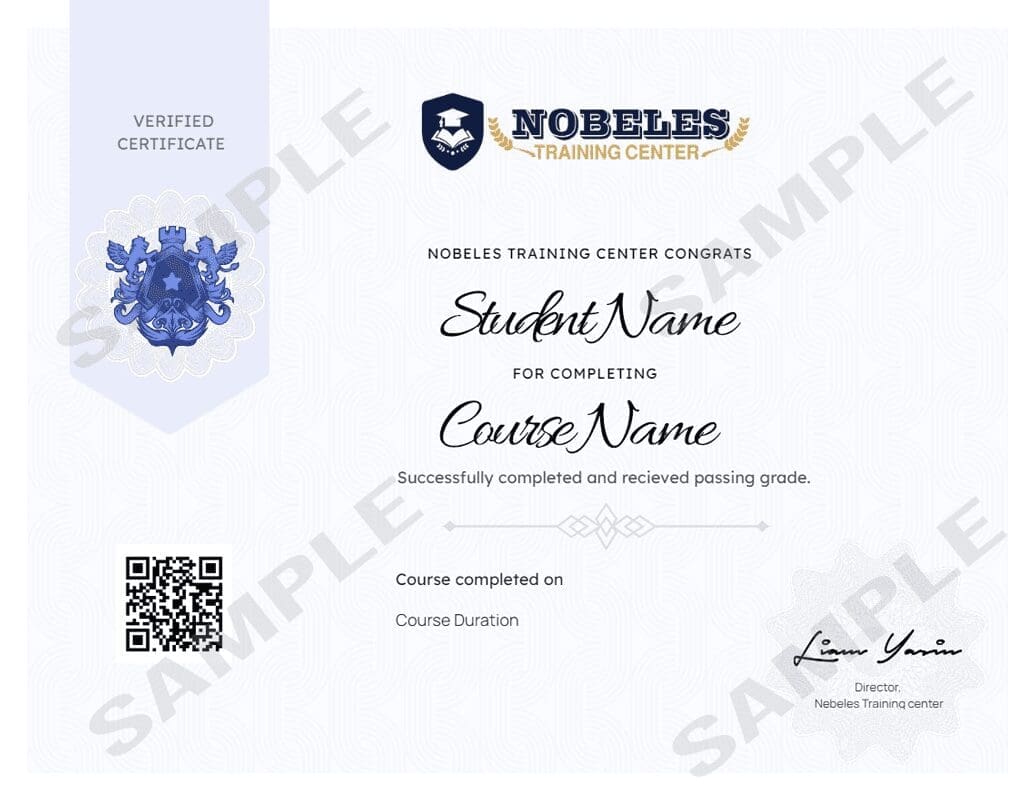Description
Curriculum
Instructor
Welcome to the Responsibility in the Workplace course. One of the most critical traits to look for in an employee is responsibility. Responsible employees drive the success of an organization, whether for profit or not for profit.
This course will introduce to you the idea of responsibility and the traits that define a responsible employee. It will also show the effects of having responsible employees versus irresponsible employees. And finally, the course will cover the steps to becoming more responsible.
Please enter your name and email to view the content:
Curriculum
- 11 Sections
- 11 Lessons
- 10 Hours
Expand all sectionsCollapse all sections
- Accountability LadderThe Accountability Ladder outlines levels of responsibility, from denial to ownership. It encourages proactive problem-solving, emphasizing that employees should embrace their roles and foster a culture of accountability in the workplace.1
- Examples of ResponsibilityExamples of responsibility in the workplace include meeting deadlines, following safety protocols, managing team tasks, providing constructive feedback, owning mistakes, and ensuring effective communication with colleagues and clients.1
- ImportanceResponsibility in the workplace fosters trust, enhances teamwork, boosts productivity, and improves employee morale. It promotes accountability, encourages ethical behavior, and drives organizational success by aligning individual actions with company goals.1
- BenefitsBenefits of responsibility in the workplace include improved job performance, stronger team dynamics, increased employee engagement, better decision-making, enhanced reputation, and a positive work environment that supports growth and innovation.1
- Characteristics of Responsible PeopleCharacteristics of responsible people include reliability, integrity, accountability, strong work ethic, effective communication, problem-solving skills, commitment to quality, and the ability to prioritize tasks and manage time efficiently.1
- BarriersBarriers to responsibility in the workplace include lack of clear expectations, inadequate training, poor communication, a blame-oriented culture, fear of failure, insufficient resources, and low employee engagement, hindering accountability.1
- Overcome BarriersOvercoming barriers to responsibility involves establishing clear expectations, providing training, fostering open communication, creating a supportive culture, encouraging risk-taking, allocating adequate resources, and actively engaging employees in decision-making processes.1
- Increasing ResponsibilitiesIncreasing responsibilities in the workplace can lead to personal growth, skill development, and enhanced career prospects. It encourages employees to take initiative, build leadership qualities, and contribute more significantly to organizational goals.1
- Accountability SoftwareAccountability software helps track responsibilities, monitor performance, and facilitate communication within teams. It enhances transparency, promotes ownership of tasks, and enables effective reporting, leading to improved productivity and accountability in the workplace.1
- Accountability Software IIAccountability software II focuses on advanced features like goal setting, real-time progress tracking, feedback mechanisms, and analytics. It enhances collaboration, streamlines workflows, and supports a culture of accountability and continuous improvement.1
- Post TestPost Test1
Nobles Center

5 Students146 Courses
Review
$195.00
204 students
11 lessons
Language: English
0 quiz
Assessments: Yes
Skill level All levels
Nobles Certificate
At the end of the course, you can download a copy of your certified certificate.
Nobeles Academy
Mobile Application
Download the Nobeles center mobile app from the app app store, click the button below
Courses you might be interested in
Welcome to the Civility in the Workplace workshop. While a training program on workplace manners and courtesy may seem like overkill, the reality is: rudeness is an epidemic costing industries...
-
11 Lessons
$225.00
Welcome to the Respect in the Workplace course. A respectful work environment is essential to the overall success of your team, and will contribute to a well-founded work reputation. Evidently,...
-
11 Lessons
$195.00
Those who are in management are responsible for protecting the safety of their employees. Workplace safety, however, is the responsibility of everyone in an organization. Companies have legal obligations to...
-
11 Lessons
$225.00





